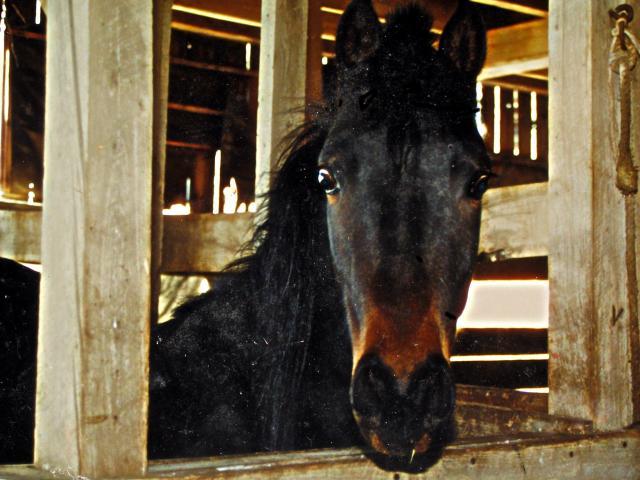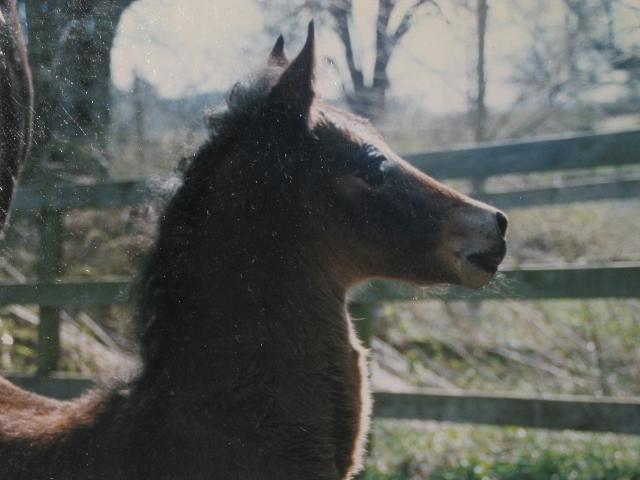Quote:
Actually Sheridan rode a Morgan named Rienzi during the Civil War!
This seems like a prime opportunity to show off some of my Morgans. Ruby was a heartbreaker. I bought her as a two year old for $2500. I became preggers and sold her for $8000. She went World Senior (5 & up) Mare and the gentlemen I sold her to turned down $100,000 for her.
I showed, but I refuse to have a Morgan with an ugly head and I like them typey but showy too. I'm glad the Lippetts are still around, but I like showing too much to go that route breedingwise.
Ruby the night I brought her home.

Ruby outside. She's standing funny, but you can see what a neat little mare she is.

The last foal I bred. I still own her.

A customer's horse, Tara's Kingsport in the open park saddle at a regional show. He could trot, but was very typey as well. Yep, that's me on him. Looks odd because it's a video still.

Actually Sheridan rode a Morgan named Rienzi during the Civil War!
This seems like a prime opportunity to show off some of my Morgans. Ruby was a heartbreaker. I bought her as a two year old for $2500. I became preggers and sold her for $8000. She went World Senior (5 & up) Mare and the gentlemen I sold her to turned down $100,000 for her.

I showed, but I refuse to have a Morgan with an ugly head and I like them typey but showy too. I'm glad the Lippetts are still around, but I like showing too much to go that route breedingwise.
Ruby the night I brought her home.

Ruby outside. She's standing funny, but you can see what a neat little mare she is.

The last foal I bred. I still own her.

A customer's horse, Tara's Kingsport in the open park saddle at a regional show. He could trot, but was very typey as well. Yep, that's me on him. Looks odd because it's a video still.

Last edited:






